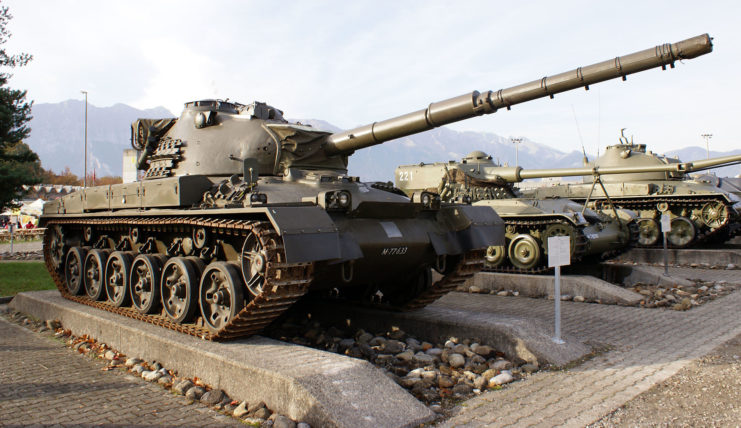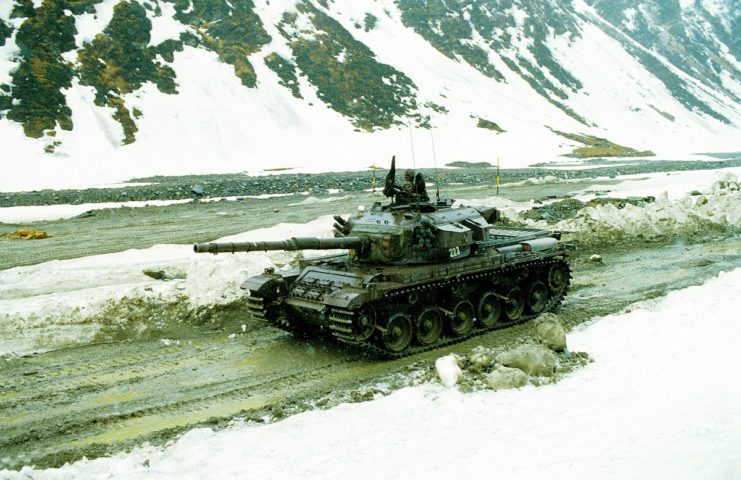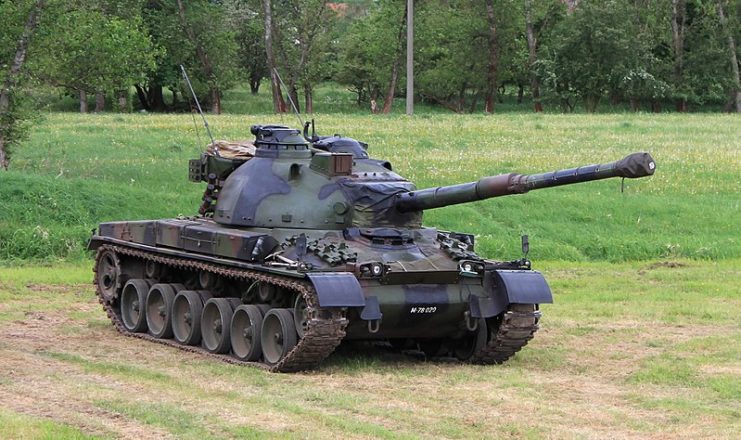The Swiss Panzer 68 was Switzerland’s attempt at designing and building their own main battle tank (MBT), which is no easy feat. It was designed in the 1960s and was based on a tank that was developed in the post-war period, that was arguably obsolete as soon as it entered service. While the Panzer 68 improved on this earlier design, it too would see its own share of issues. Some of these were so bad that the vehicle became the centerpiece of a political scandal, resulting in the resignation of Switzerland’s minister of defense.
Panzer 61

The Panzer 61 was the precursor to the Panzer 68 that was developed in the 1950s to solve the nation’s lack of MBTs. After WWII, Switzerland was eager to purchase foreign tanks to replace their outdated wartime vehicles like the Hetzer. Because of the Korean War, sourcing quality foreign vehicles proved to be impossible, so the Swiss settled on the French AMX 13 as a stopgap until a more capable design could be found.
In 1953, the government placed funding aside for the development of their own MBT. The first prototype for this vehicle was running by 1957. To begin with, the tank was armed with a Swiss 90 mm gun, which was soon replaced with a British Ordnance QF 20 pounder.
Eventually, they would settle on the Royal Ordnance L7 105mm, which is regarded as one of the best tank guns ever made. The vehicle would enter production with this gun in 1961 as the Panzer 61. Bear in mind the much more capable Soviet T-54 had already been in production for over a decade at this point.
As soon as it entered production, the Panzer 61 was already out of date, so the Swiss began work on its replacement.
Panzer 68

The Panzer 68 was built from the basic design of the Panzer 61. This vehicle brought wider tracks, a more powerful engine, and a stabilized gun. Its armor thickness was increased too, from a maximum of 80 mm on the Panzer 61 to 120 mm on the Panzer 68.
Despite its name, the Panzer 68 would actually enter production in 1971. Like its predecessor, the Panzer 68 was hopelessly outclassed upon its arrival. Its rolled steel armor was simply inadequate against modern weapons, while its gun, still the 105 mm L7, was capable, but far behind newer MBTs, many of which were now using 120 mm guns.
To put this into perspective, by the time the Panzer 68 entered production in 1971 the British Chieftain had already been in service for five years, and the Soviet T-64 with its 125 mm gun had been in service since the early 1960s. In addition, the US M1 Abrams was just nine years away.
However, it must be acknowledged that the 44 ton Panzer 68 was a relatively small and lightweight vehicle compared to many other MBTs.
Over the next few decades, the Panzer 68 would receive numerous upgrades. In 1992 the tank was completely obsolete but the Swiss began hefty modernization upgrades to make it as competitive as possible. This version was named the Panzer 68/88. Interestingly, these updates introduced the fire control system from the Leopard 2.
Despite this, the vehicle was slowly relegated to secondary roles after Switzerland began operating the massively superior Leopard 2.
The Panzer 68 was completely removed from service by 2003.
Terrible design flaws

The Panzer 68 is a rather underwhelming vehicle, that is mostly remembered for a few awful design flaws. In 1979, a Swiss weekly magazine released an article that described problems with the Panzer 68. In the article, the chief of armored forces of the Swiss Army said the tank was “not fit for combat.” This article prompted a government review of the vehicle.
This review found a startling amount of issues with the Panzer 68. Some of these included the tank’s nuclear biological chemical (NBC) system, which was so bad that crews had to still wear personal protection inside the vehicle. One crew member explained that with this protection on, their capabilities were severely hampered, and they were unable to accurately fire the gun.
Another issue was with the vehicle’s gearbox, which couldn’t be shifted into reverse until the tank came to a complete stop.
Next, the Panzer 68’s radios interfered with its electronic turret rotation system, causing uncontrolled movements of the turret. This terrifying fault could have been fatal while trying to lay the gun onto an enemy. To work around this problem crews head to switch off the tank’s radios in combat, which made communicating with other vehicles impossible.
Finally, the most disturbing flaw was with the main gun itself, which could fire spontaneously. Because the firing mechanism shared circuits with the tank’s heaters, the main gun was prone to firing when the heaters were activated. Fortunately, this flaw did not cause any accidents, and most of the issues were fixed with the Panzer 68/88 version.
Regardless, the political fallout from such reports caused the minister of defense to resign.
The Panzer 68 was a good attempt at an MBT, especially from a nation with little experience in tank design. But unfortunately, it fell short of its rivals, and its frightening flaws are now its best-known aspects.
